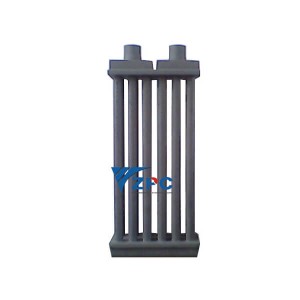As the “unsung hero” of energy transfer in the industrial field, heat exchangers silently support the operation of industries such as chemical, power, and metallurgy. From air conditioning cooling to rocket engine cooling, its presence is everywhere. However, behind the seemingly simple heat transfer, the choice of materials often becomes the key to determining the success or failure of the equipment. Today we will uncover the core code of heat exchangers and learn how silicon carbide ceramics bring innovation to this field.
1、 The versatile forms of heat exchangers
Heat exchangers are mainly divided into four categories based on their structural characteristics:
1. Shell and tube type – a multi-layered pipeline design resembling a nested doll, where the internal and external media transfer heat indirectly through the pipe wall, suitable for high-pressure and high-temperature scenarios;
2. Plate type – composed of corrugated metal plates stacked into maze channels, the thin plate structure allows for efficient “surface to surface” heat transfer of hot and cold fluids;
3. Fin type – metal wings grow on the surface of the pipeline to increase the surface area and improve air heat transfer efficiency;
4. Spiral – Curl the flow channel into a spring shape to extend the contact time of the medium in a limited space.
Every structure is in a game with the physical properties of the material: for example, traditional metal materials, although conducting heat quickly, frequently expose shortcomings under extreme conditions such as corrosion and high temperatures.

2、 Material Revolution: The Breakthrough of Silicon Carbide Ceramics
As engineers continuously optimize the structure of heat exchangers, the emergence of silicon carbide ceramics has accelerated this evolution. This artificially synthesized super strong ceramic material is rewriting the game rules in the field of heat exchange:
1. Corrosion Terminator
Chemical corrosion such as strong acid and salt spray is like the “natural enemy” of metals, while silicon carbide ceramics have extremely high corrosion resistance. In chemical production, their service life can reach several times that of traditional stainless steel, and equipment maintenance cycles are greatly extended.
2. Heat fast lane
Although called ceramic, its thermal conductivity is comparable to aluminum alloy. The unique crystal structure allows heat to soar like on a highway, with heat transfer efficiency several times higher than ordinary ceramics, making it particularly suitable for precision temperature control systems that require rapid response.
3. High temperature fighter
It can maintain structural stability even at a high temperature of 1350 ℃, which makes it irreplaceable in special fields such as waste incineration and aerospace. Metal materials have already softened and deformed in this environment, but silicon carbide remains strong.
4. Light and easy to carry
Compared to bulky metal equipment, silicon carbide ceramics have a lower density. This “lightweight” advantage is particularly valuable in mobile devices and high-altitude work scenarios, directly reducing transportation and installation costs.
3、 The future is here: New materials drive industrial upgrading
In the context of carbon neutrality, industrial equipment has increasingly stringent requirements for energy efficiency. Silicon carbide ceramic heat exchangers not only reduce energy loss caused by corrosion and scaling, but also have a long lifespan that reduces resource waste caused by equipment replacement at the source. At present, this technology has been successfully applied in new energy fields such as photovoltaic polycrystalline silicon preparation and lithium battery material sintering, demonstrating strong cross-border adaptability.
As an innovator deeply involved in the research and development of silicon carbide ceramics, we are continuously breaking through the technological barriers of material forming and precision machining. By customizing products with different porosity and surface characteristics, this’ black technology ‘can truly meet the special needs of various industries. When traditional heat exchangers encounter performance bottlenecks, silicon carbide ceramics are ushering in a new era of efficient heat transfer.
The evolution history of heat exchange technology is essentially a chronicle of material innovation. From cast iron to titanium alloy, from graphite to silicon carbide, each material transition brings a stepped improvement in energy efficiency. Choosing silicon carbide ceramics is not only about choosing more reliable equipment components, but also about choosing sustainable industrial solutions for the future.
Post time: May-27-2025